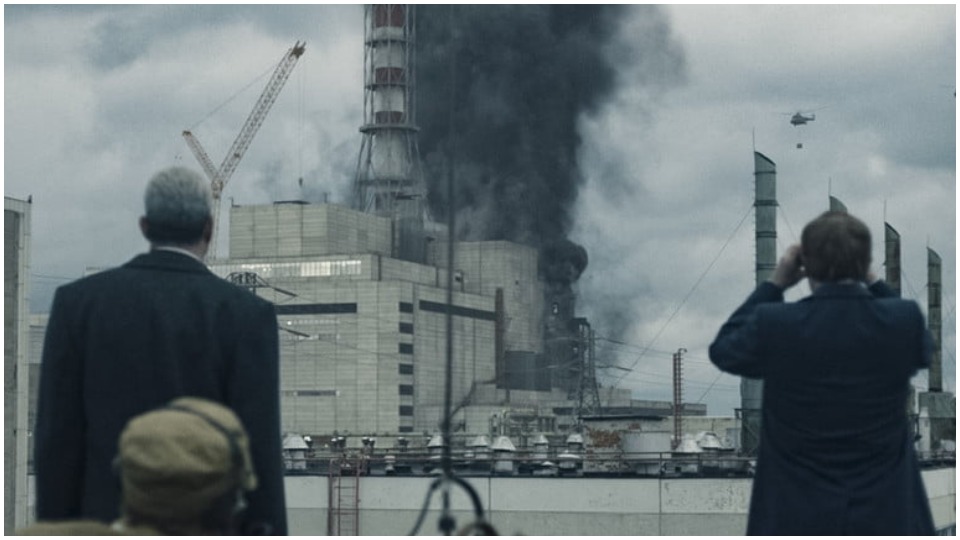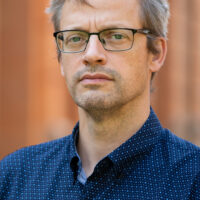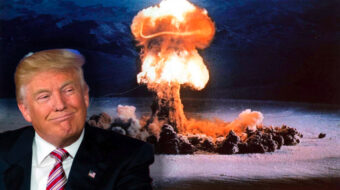
Truth, the unvarnished, objectiveness of fact, is the hero of Chernobyl, the controversial HBO mini-series. It was created by Craig Mazin, mostly known for his writing on the sequels to the farcical Scary Movie and Hangover franchises. Unfortunately, the truth gets short shrift in what turns out to be a distorted, if quite well-acted and intellectually terrorizing series.
In a carefully choreographed, climactic courtroom scene, characterized as a “show trial,” the Soviet scientist Valery Legasov states, “We are on dangerous ground now, because of our secrets and our lies.” Referencing supposedly the propensity of the Soviet government to withhold truths from its own people and the world, even to the point of endangering their lives, Mazin’s version of Legasov, says, “When the truth offends, we lie and lie until we can no longer remember it is even there. But it is still there.”

Ascending the heights of the writer’s powers, Legasov continues, “Every lie we tell incurs a debt to the truth. Sooner or later that debt is paid. That is how an RBMK reactor explodes: lies.” Here, the thrust of the series’ plot leads us to its crucial revelation and central argument: Soviet lies, its Stalinist tendency to hide the truth to save money, to suppress internal dissent and prevent external criticism, to pretend that the theories of Marxism were always correct—these were the ultimate cause of the disaster.
Numerous mainstream media outlets upon reviewing the film, from the New York Times to The New Yorker, as well as some online venues like BusinessInsider and Jacobin magazine, have noted many important historical inaccuracies inserted into the series. Some critics have regarded these distortions as undermining the quality of the series without questioning the veracity of the central argument. Or, as in the case of the Jacobin review, dismiss the entire series as a holdover of Cold War propaganda with little present-day value.
Mazin, for his part, apparently defends the ironic leap from the truth about the events on artistic terms. For example, in the series’ closing credits, a short documentary summarizing the historical events notes that the invented scientist, Ulyana Khomyuk, played by Emily Watson, was a composite of scientists who sought to learn the truth about the events leading up to the disaster at Chernobyl. Instead of revealing that the scientific investigation conducted by numerous experts and scientists was ordered by the Soviet government, the series implies that it was a clandestine, underground effort thwarted by officials. Nothing, however, is said about the fact that Legasov never attended the “show trial,” which, of course, forecloses the dramatic encounter with the KGB official after the trial’s conclusion. Further, the supposed “truth” Legasov “courageously” revealed at the trial had, in fact, already been presented to the International Atomic Energy Agency (and the West) months earlier.
Essentially, Legasov’s “revelations” seem to show that the personal temperaments and institutionalized competition for power among Soviet bureaucrats, the faulty equipment caused by the pressure to reduce costs, and the objective problems of the planned economy, combined with operator errors to cause the accident. Subsequently, the slow response and failures to secure more capable international assistance (fabricated features of the plot) emerged from the Soviet government’s unwillingness to reveal its weaknesses.
These, and numerous other fabrications, work against the creator’s otherwise important claim about “the truth.”
Fortunately, many of these distortions do not undermine the series’ depiction of the heroic efforts of everyday Soviet people—not ideologues and theorists or powerful political figures or superstar scientists—but miners, plant workers, civil servants, and medical staff in saving lives and thwarting what easily could have turned into a global disaster. Many took these actions knowing the risks to their own lives and health. Many suffered greatly and without much recognition for their sacrifice. For example, the role of Chinese-born architect Maria Protsenko, who designed the neighboring city of Pripyat and orchestrated the immediate evacuation of the city’s people, is simply ignored by the HBO series.

Mazin has further stated that his primary goal was an attempt to compare the Chernobyl disaster to the looming disaster of global climate change and the politicization of that reality by the right-wing in the U.S. Climate change deniers have established a powerful and well-funded project of ideologically justifying maintaining current usages of fossil fuels for the sake of preserving capitalism rather than making changes that could prevent a global catastrophe. They have even convinced large sections of their right-wing base to revel in the waste of natural resources for this ideological purpose.
Simply put, Mazin chose to flog the dead horse of Cold War anti-Sovietism in order to make a statement about global climate change, while “truth” suffers in the process.
What I liked about the series
Maybe historical events have to be distorted because people just “can’t handle the truth.” But if we examine features of the story (as presented by HBO) that have less to do with specific historical facts and more to do with reasonable and generalizable claims about how human beings should act in the world, some surprising and worthy ideas emerge.
First, the danger caused by allowing personal power or profit to shape important decisions that could threaten lives is something with which American viewers of this series can likely immediately cite a direct experience.
To take a recent example, Boeing knew that its 737 MAX used faulty software that led directly to the deaths of passengers, but pressured its employees to downplay problems in order to avoid scrutiny by the FAA. Further, deregulation at the FAA, created by right-wing ideology about reducing the “size” of the federal government and opening the door to unfettered business activity, allowed Boeing to get away with this and to risk the lives of passengers for the sake of profit.
In other words, the truth was deliberately withheld from the regulatory experts who could have prevented the plane from being used. The truth was hidden from the public, which could have been empowered to choose not to fly on faulty airplanes.
Ideology about free markets, rational individual choices, and the moral dictates of profit and greed led to human deaths.
Salmonella in peanut butter, vehicle safety problems, and the BP oil spill are only a handful of recent examples that have specifically to do with corporate decisions as part of the capitalist system most closely affecting American lives and health.
To be sure, these decisions are just about profit and avoiding the higher cost of safety. These decisions are about the imperative, the capitalist law of reducing costs, raising profit margins, and increasing productivity.
Beyond individual incidents, we could explore the U.S. food system as a whole for similar deadly faults. While it would be humanly possible to design, plan, and build a food system that uses locally produced resources that provide healthy nutrition to local populations, we instead live with a vast corporate agribusiness system that wastes much if not most of what is produced, creates tons of pollution through processing and transportation, and is likely responsible for major public health crises like obesity, diabetes, and many forms of cancer.
Any serious analysis of the for-profit health system leads to similar conclusions.
Thus, if a truth from “Chernobyl” is discernible for real life, it is that the ideological defense of capitalism’s logic of profit motive, competition, and grubbing for power costs lives. The ideological defense of profit and greed produces the conditions in which that danger is irrationally allowed to persist.
In a dramatic scene in which Legasov, using red and blue cards to indicate the phases of reaction and the plant’s control of them, shows the court how a nuclear reactor like Chernobyl works, he states, “This is the invisible dance that powers entire cities without smoke or flame, and it is beautiful––when things are normal.”
His description of the reaction process reveals a high level of scientific knowledge and technological development had been harnessed by Soviet scientists to generate electricity for millions of neighboring residents, public institutions, and productive enterprises.
The HBO story seems to imply that morally grounded and politically neutral-minded people would be better equipped to manage the theoretical “dance” of atoms, the technological might, and the human labor needed to make such a facility operate without danger. Implied is that such a group of people (overseeing the nuclear power industry instead of governments or corporations) might be able to best provide solutions to the energy crisis behind the rapidly growing dangers of climate change. Such people would be disinterested scientists and apolitical experts who have nothing but the best interests of humanity at heart.
Where we find such people isn’t elaborated upon in the story. And we know that experts in the U.S. are as interested in political ideologies, power, and money, or just keeping their jobs just as much as the characters in Mazin’s story were. And no honest person, however ideologically loyal to capitalism or right-wing theories of government and regulation they may be, will deny that corporate decisions based on profit produce regular, often hidden threats to human safety and health, not to mention to other living species. Nor would such an honest person deny that only coercion (regulation, oversight, and enforcement) from a non-corporate and politically independent entity can ensure that corporations or government entities operate with safety and health as their top priority.
What are the ethical implications?

Mazin’s valuing of science as a source of moral imperative above political and corporate interests is worthy of serious discussion. One important question that might be discussed is how do we separate such a system from the corporate greed and competition for power and resources pathologically endemic to capitalism? How do we raise the health and safety of everybody and nature to a higher plane of priority above profit, above stock prices, above scoring political points?
These are questions unaddressed by Chernobyl, and things we have to answer and struggle for in the real world if we intend to preserve ourselves, not as a nation or inhabitants of an ideological system, but as a species.
On a far lighter note, I could not but help enjoy the throwback to the 1980s in the costume design and technology props.










